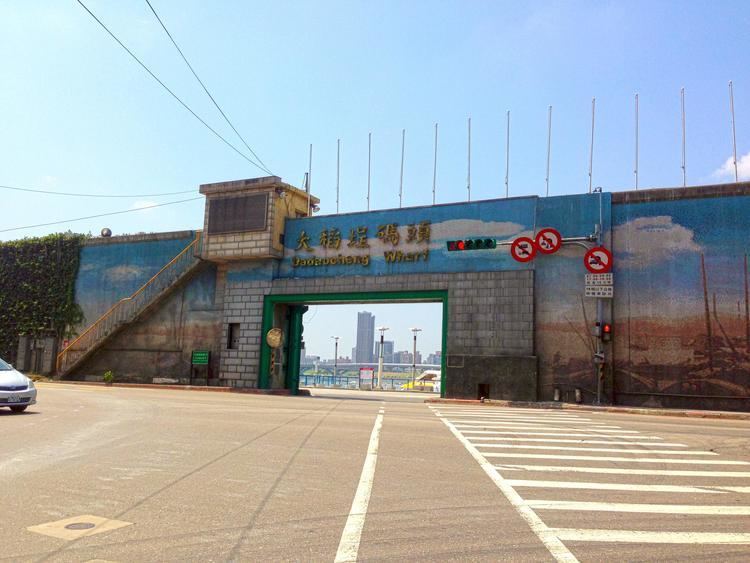Chinese 大稻埕 Literal meaning big rice-drying field Wade–Giles Ta-tao-ch'eng | Hokkien POJ Tōa-tiū-tiâⁿ Hanyu Pinyin Hokkien POJ Tōa-tiū-tiâⁿ | |
 | ||
Similar Xia Hai Temple in Taipei, Daqiaotou Station, Dadaocheng Theater, Chien‑Cheng Circle, Ningxia Night Market | ||
2016 5 2 taipei dadaocheng wharf in 4k w dji phantom 3
Twatutia (a transliteration of the Taiwanese Hokkien Tōa-tiū-tiâⁿ), is an area in the Datong District, part of the Taipei Basin and a historic section of Taipei. It was also known as Daitōtei during Japanese rule, and Tataocheng or Dadaocheng during the Kuomintang era.
Contents
- 2016 5 2 taipei dadaocheng wharf in 4k w dji phantom 3
- Map of 103 Taiwan Taipei City Datong District E5A4A7E7A8BBE59F95E7A2BCE9A0AD
- Dadaocheng spiel 2015
- History
- References
Map of 103, Taiwan, Taipei City, Datong District, %E5%A4%A7%E7%A8%BB%E5%9F%95%E7%A2%BC%E9%A0%AD
Twatutia was an important trading port in the 19th century, and is still a major historical tourist attraction and shopping area. The district is known for the local Taiwanese cuisine, the Chien-Cheng Circle, and also being the center of the February 28 Incident.
Dadaocheng spiel 2015
History
When the export of tea became important in northern Taiwan in the mid-19th century, many businessmen appeared at Twatutia. The first shop opened in 1851, belonging to Lin Lan-tian (林藍田), a native of Keelung. Lin opened three shops that he later called Lim Ek-sun (林益順). Foreigners entered the trade in 1867 and five British firms had been established at Twatutia by 1872.
In 1853, many people moved into the area from Bangka following a serious conflict.
The first rail station in Taipeh (modern-day Taipei) was completed in Twatutia in October 1891, when the railway to Keelung was opened for service. The branch line from Taipeh to Tamsui was completed in June 1901, and Daitotei Station (Japanese: 大稻埕驛) (大稻埕車站) opened as part of the then TRA Tamsui Line. However, it was closed to passenger service in 1916 and continued to operate as a freight-only station until its eventual closure in 1937.
In the early 20th century, Daitotei was considered a part of the Taihoku (Taipei) area outside of the city proper, and was where European settlers lived. It stretched northward along the Tamsui River, which flows down to the port, a distance of about 10 miles (16 km). Daitotei was the second most populous city in Taiwan (second to Tainan and followed by Banka) with a population of thirty to forty thousand. In 1920, it became part of the newly incorporated Taihoku City under Taihoku Prefecture.
Daitotei was the location for one of the first movie theaters built for the native Taiwanese audience during Japanese rule. The interior structure of Eraku-za imitated the Imperial Theater in Tokyo and included a café, a gymnasium and dressing rooms.
The most famous street in Dadaocheng was named Dihua Street after World War II and is the oldest street in Taipei. There are many stores selling dried goods and snacks, especially before the Lunar New Year. Taipei Xiahai City God Temple is also on Dihua Street. There is a festival to celebrate the birthday of Xiahai Chenghuang (a city god) on the 13th day of the 5th lunar month every year.
